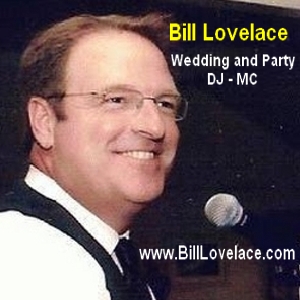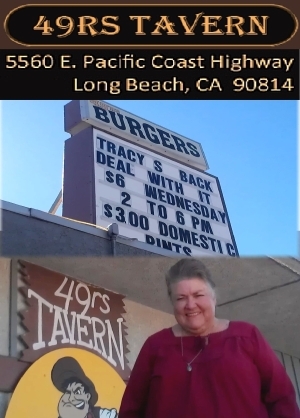[CA Dept. of Housing and Community Development website text, viewed Feb. 6, 2018]
SB 35 (Wiener) Streamlined Housing Approval Process
Q: How will SB 35 help to speed up housing development in California?
A: For jurisdictions that have not met regional housing needs targets, SB 35 will streamline approval processes allowing construction to happen more quickly. The bill also ensures that more housing is “infill.” Infill housing is either constructed on vacant lots among older, existing properties in urban neighborhoods, or inserted into an already-approved neighborhood as additional units. These infill developments must provide at least 10 percent of the housing units for lower-income individuals or families. The developer must also pay construction workers the current prevailing wage.
Q: Which jurisdictions will be subject to SB 35 requirements?
A: A jurisdiction may be subject to SB 35 for:
- not permitting sufficient housing units to meet its pro-rata share of regional housing need, or;
- not submitting Annual Progress Reports (APRs) (pursuant to Section 65913.4(a)(4)(A)).
HCD provided preview Annual Progress Report (APR) data to jurisdictions in November 2017. Visit the Regional Housing Needs Allocation and Housing Elements page (and click on "Annual Progress Reports") to view the list of jurisdictions that are subject to SB 35 and the information on the methodology. HCD will update the list at least quarterly to incorporate late annual progress reports and corrections.
Q: How are regional housing needs targets determined?
A: Regional housing needs targets are determined through the Regional Housing Needs Allocation (RHNA) process every five to eight years, and are incorporated into each local government’s housing element of the general plan. For additional information, see the Regional Housing Needs Allocation page.
Q: Does SB 35 apply prior to the development of guidelines? When will HCD develop guidelines around the implementation of SB 35?
A: Yes, SB 35 does apply prior to guideline development. The law is applicable January 1, 2018 and its implementation is not dependent on the development of guidelines by HCD. HCD is expecting to begin the public participation process for guideline development in Spring 2018.
Q: SB 35 refers to the share of the regional housing need by income category for the reporting period, which is either the first or second half of the planning cycle. How will HCD determine whether jurisdictions have permitted less than their share of the jurisdiction’s regional housing need by income for the reporting period if the jurisdiction has not yet reached the first half of its planning period?
A: Until every jurisdiction has reached the end of the first half of their fifth cycle planning period, HCD will pro-rate the regional housing need. For example, a jurisdiction that is three years into an eight-year planning period on January 2018, would have met their regional housing need by income if they had permitted three out of the eight years of their assigned regional housing need for that income category. The list of which jurisdictions are subject to SB 35 and information on the methodology for this determination is available on the Regional Housing Needs Allocation page under "Annual Progress Reports."
Q: How long does HCD’s determination last? Could a jurisdiction request an update of their determination if new information becomes available?
A: HCD will recalculate the pro-rated regional housing need target, and permitting progress toward that need, each year after APRs are due until all jurisdictions have reached the end of the first half of their fifth cycle planning period. At that point, the determination will hold until the next reporting period begins. HCD is currently continuing to accept corrections and late submissions of Annual Progress Reports (APRs).
Q: Charter cities will be subject to the annual report requirement beginning January 1, 2018. Will charter cities be subject to SB 35 if they did not submit Annual Progress Reports (APRs) for the prior reporting period?
A: As of January 1, 2018, all jurisdictions, including charter cities, will be subject to SB 35 if they do not submit their latest APR. Currently the latest required APR is the 2016 APR, which was due April 2017. The 2017 APR will be due April 2018. Charter cities may also wish to submit prior fifth cycle APRs to enable the housing permits from those years to count toward their regional housing need targets.
Q: What minimum percentage of below-market rate housing must a development provide?
A: The minimum affordability level required for a project to receive streamlining within a jurisdiction changes based on which income categories of the regional housing need have not been met (pursuant to Section 65913.4(a)(4)(B))
| Streamlining for projects with 10 percent affordable units (and that meet other SB 35 provisions) |
Note: If a local ordinance requires greater than 10 percent affordability, the local ordinance applies. |
| Streamlining for projects with 50 percent affordable units (and that meet other SB 35 provisions) |
Note: If a local ordinance requires greater than 50 percent affordability, the local ordinance applies. |
Q: Must a development propose the maximum density permitted in the land use designation, or simply not exceed the maximum density? (pursuant to Section 65913.4(a)(5)(A))
A: A project must be compliant with the maximum density allowed, which would include any density allowed under the land use designation, up to the maximum density.
Q: If the total number of housing units on a parcel or specific plan area is limited to a specific number or allocation, could the total number of housing units in a development exceed that allocation if it is consistent with maximum density standards? (pursuant to Section 65913.4(a)(5)(A))
A: Yes. The statute specifies that a project that meets the maximum density allowed pursuant to that land use designation must be deemed consistent with objective zoning standards related to density regardless of any additional unit caps that are placed upon the parcel.
Q: Could a developer request a density bonus in addition to using the maximum allowable density?
A: Yes. SB 35 allows a development to request a density bonus that would exceed maximum allowable density in the zone and still qualify for streamlining provisions under SB 35 (pursuant to Section 65913.4(a)(5)(A)).
Q: If a specific plan or other legislative approval such as a conditional use permit is required by a city’s general plan, is such a requirement not considered an “objective planning standard” and therefore would not apply to an SB 35 development?
A: SB 35 specifically exempts developments from the conditional use permit process and must be approved through a streamlined, ministerial approval process if it satisfies the objective planning standard described (pursuant to Section 65913.4(a))
Q: Are both non-residential and residential portions of a mixed-use development subject to the streamlined and ministerial approval process, provided that residential uses make up at least two-thirds of the square footage of the total development?
A: Yes. If the entire development meets the requirements under SB 35, it can be subject to the streamlining process.
SB 35 (Wiener) and AB 879 (Grayson) Annual Progress Report
The California Housing Package relies on the submittal of annual reports pursuant to Government Code Section 65400. Information on the actual reporting requirements including frequently asked questions can be found in the Annual Progress Report section.
Q: When will Annual Progress Report (APR) forms be updated to accommodate changes from the California Housing Package?
A: There will be no changes to APR forms for the 2017 reporting period, due April 2018. The new data requirements will impact the 2018 APRs due April 2019, and the forms will be changed leading up to that.
Q: Do Charter cities have to submit APRs?
A: Yes. AB 879 (Grayson), Statutes of 2017 requires Charter cities to submit annual progress reports starting in 2018. Forms and instructions can be found in the Annual Progress Reports section. Annual Progress Reports may be submitted online using the Online Annual Progress Reporting system . Email APR@hcd.ca.gov to request a user name and password.
Q: At what stage or level are units allowed on the Annual Progress Report (APR): units that are approved, permitted, or built?
A: Only permitted units should be reported; these units should represent the final permitting needed before the units can begin construction. As a result of recent legislation, there will be broader reporting requirements in the future, but those requirements will not come into effect until the 2018 Annual Progress Reports, due April 2019.
SB 35 was opposed by dozens of CA cities and by the League of CA Cities, but the City of Long Beach remained "neutral" on SB 35, despite a "2017 State Legislative Agenda" (a list of 2017 policies) approved by the Council's "State Legislation Committee" (Austin, Mungo, Gonzalez) on Jan. 10, 2017, and approved by the full Council on April 4, 2017 (7-0, Price and Andrews absent) reciting that the following would be City of Long Beach policy toward state legislation: "oppose legislation that preempts the City's existing control over local matters"..."oppose policies and legislation that preempts the current authority possessed by the City and delegates that authority to the State or other government jurisdiction"..."oppose policies and legislation that diminishes the City's local control over land use, planning, zoning and development decisions, and oppose legislation in conflict with the City's adopted General Plan or other Council adopted land use policies."
Sponsor | Sponsor |
Instead of opposing SB 35, the City of LB took a "neutral" or "watch" position on the bill. At the same time, the Council's "State Legislation Committee" (Austin, Mungo and Gonzalez) failed to meet between Jan. 11 and November 21 while the state legislature was taking votes and advancing SB 35 and a package of locally preemptive land use/housing related bills (listed below) to passage and enactment.
Sponsor | Sponsor |
Citing loss of local control, multiple CA opposed SB 35 (including Lakewood and Signal Hill) as did the League of CA Cities (advocacy group for over 400+ dues paying cities, including LB.) the LB City Council voted earlier this year to oppose Sacramento legislation that could reduce local control, the City of LB remained officially "neutral" on SB 35 and working with the author on amendments consistent with the city's policy on local control.
On June 1, SB 35 cleared the state Senate with "yes" votes by LB-area State Senators Ricardo Lara (D, LB-Huntington Park) and Janet Nguyen (R, SE LB-west OC).
About a week before final Sac'to votes, Assemblyman Patrick O'Donnell (D, LB-SP) announced his opposition to SB 35 (citing LB's history of "crackerbox" density and loss of local control)...but by this time Sac'to's Democrat majority legislative leadership already had sufficient supportive votes in line for SB 35's passage. At an early September community meeting, 3rd Councilwoman Suzie Price indicated that like O'Donnell she also opposed SB 35 based on local control. About the same time, Mayor Robert Garcia quietly Tweeted to an individual that he also opposed SB 35.
In the days prior to the final legislative vote, Mayor Garcia flew to Lima, Peru for a photo-op (his presence not legally required) related to the 2028 Los Angeles Olympics (at which organizers have scheduled some Long Beach events) instead of traveling to Sacramento to try to stop or gain some amendments protecting LB's interests. Instead, Councilman Austin (chair of the Council's "State Legislation Committee") flew to Sacramento in the final days of the legislative session for an event held by the League of CA Cities. (Austin's office didn't respond to LBREPORT.com requests for information on what, if anything, Councilman Austin did re SB 35 during the trip.)
Councilman Austin has previously indicated to LBREPORT.com that he is considering a possible run for the state Senate seat that would become vacant if state Senator Ricardo Lara (D, LB-Huntington Park) is elected statewide Insurance Commissioner in November 2018.
There's also speculation that Mayor Garcia, a close friend of Sen. Lara, might seek Lara's endorsement and -- by this time next year -- may be running for the vacated state Senate seat.
Sponsor |  |
All told, the state legislature passed 15 housing-related bills, which Gov. Brown signed into law and now impact local land use decisionmaking regarding housing. They are:
SB 35 (Wiener) Streamline Approval Process
AB 73 (Chiu) Housing Sustainability Districts
SB 540 (Roth) Workforce Housing Opportunity Zones
AB 678 (Bocanegra)/ SB 167 (Skinner) and AB 1515 (Daly) Housing Accountability Act
AB 72 (Santiago) Housing Element Law Enforcement
AB 1397 (Low) Housing Element Law Sites Requirements
SB 166 (Skinner) No Net Loss
AB 879 (Grayson) Housing Element Annual Report and Fee Study
SB 2 (Atkins) Building Jobs and Homes Act
SB 3 (Beall) Veterans and Affordable Housing Bond Act
AB 1505 (Bloom) Inclusionary Ordinances
AB 1521 (Bloom) Preservation of Existing Affordable Housing Stock
AB 571 (E. Garcia) Low Income Housing Credits for Farmworkers
The CA State Housing agency has information on these bills at this link.
Sponsor | Sponsor |
blog comments powered by Disqus
Recommend LBREPORT.com to your Facebook friends:
Follow LBReport.com with:
RSS |
Contact us: mail@LBReport.com





Hardwood Floor Specialists
Call (562) 422-2800 or (714) 836-7050
